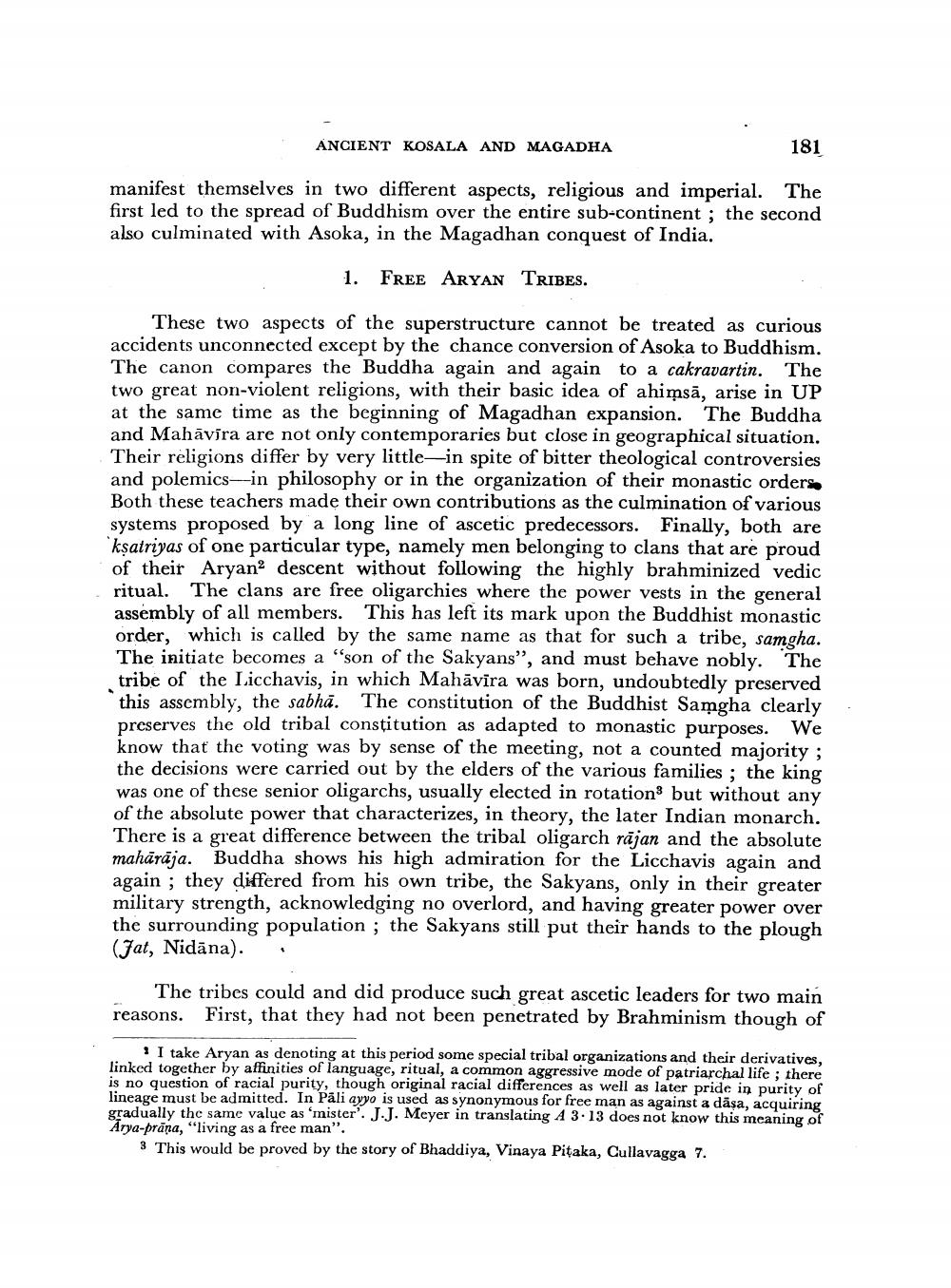Book Title: Ancient Kosala And Mmagadha Author(s): Dharmanand Kosambi Publisher: D D Kosambi View full book textPage 2
________________ ANCIENT KOSALA AND MAGADHA 181 manifest themselves in two different aspects, religious and imperial. The first led to the spread of Buddhism over the entire sub-continent; the second also culminated with Asoka, in the Magadhan conquest of India. 1. FREE ARYAN TRIBES. These two aspects of the superstructure cannot be treated as curious accidents unconnected except by the chance conversion of Asoka to Buddhism. The canon compares the Buddha again and again to a cakravartin. The two great non-violent religions, with their basic idea of ahimsā, arise in UP at the same time as the beginning of Magadhan expansion. The Buddha and Mahāvīra are not only contemporaries but close in geographical situation. Their religions differ by very little—in spite of bitter theological controversies and polemics--in philosophy or in the organization of their monastic orders Both these teachers made their own contributions as the culmination of various systems proposed by a long line of ascetic predecessors. Finally, both are ksatriyas of one particular type, namely men belonging to clans that are proud of their Aryana descent without following the highly brahminized vedic ritual. The clans are free oligarchies where the power vests in the general assembly of all members. This has left its mark upon the Buddhist monastic order, which is called by the same name as that for such a tribe, samgha. The initiate becomes a "son of the Sakyans', and must behave nobly. The tribe of the Licchavis, in which Mahāvīra was born, undoubtedly preserved this assembly, the sabhā. The constitution of the Buddhist Samgha clearly preserves the old tribal constitution as adapted to monastic purposes. We know that the voting was by sense of the meeting, not a counted majority ; the decisions were carried out by the elders of the various families; the king was one of these senior oligarchs, usually elected in rotation but without any of the absolute power that characterizes, in theory, the later Indian monarch. There is a great difference between the tribal oligarch rājan and the absolute mahārāja. Buddha shows his high admiration for the Licchavis again and again; they differed from his own tribe, the Sakyans, only in their greater military strength, acknowledging no overlord, and having greater power over the surrounding population ; the Sakyans still put their hands to the plough (Jat, Nidāna). . The tribes could and did produce such great ascetic leaders for two main reasons. First, that they had not been penetrated by Brahminism though of ! I take Aryan as denoting at this period some special tribal organizations and their derivatives, linked together by affinities of language, ritual, a common aggressive mode of patriarchal life; there is no question of racial purity, though original racial differences as well as later pride in purity of lineage must be admitted. In Pāli ayyo is used as synonymous for free man as against a dāsa, acquiring gradually the same value as 'mister'. J.J. Meyer in translating A 3.13 does not know this meaning of Arya-prāna, “living as a free man”. 3. This would be proved by the story of Bhaddiya, Vinaya Pitaka, Cullavagga 7.Page Navigation
1 2 3 4 5 6 7 8 9 10 11 12 13 14 15 16 17 18 19 20 21 22 ... 34
